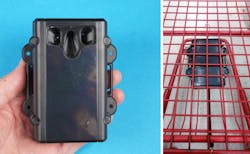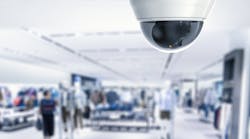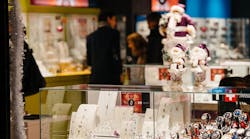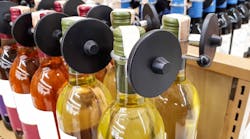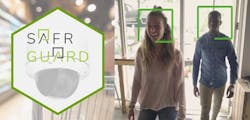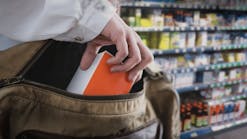In 2019, retailers reported losing a record $61.7 billion due to shrink, representing a staggering 1.62% of sales. Even in the midst of the COVID-19 pandemic when many retailers were forced to limit the number of shoppers and also cut their hours to ensure stores were thoroughly cleaned, the shrink rate remained roughly the same.
But while much of the focus of loss prevention professionals remains on curtailing issues related to organized retail crime (ORC), shoplifting and insider theft, one of the more under-the-radar issues that is contributing to these record losses is bottom-of-basket (BoB) shrink, a ploy most consumers have never heard of. In these instances, merchandise on the lower racks of shopping carts is intentionally or unintentionally not scanned by cashiers, resulting in estimated losses of nearly $2 billion annually. However, a new solution developed by a loss prevention industry veteran in conjunction with a wireless sensor maker could put a significant dent in those numbers.Known simply as the BoB, this sensor leverages time of flight and radio frequency identification (RFID) technology to measure the distance between the bottom of shopping carts and their lower shelves to alert shoppers and cashiers to when items are left on the lower rack of the buggy. The sensor is the brainchild of BoB Profit Partners, a startup lead by Founder and CEO Craig Moyer, a 35-year loss prevention professional who previously served as a District Security Manager for Macy’s and as Director of Loss Prevention at Piercing Pagoda, along with Phase IV Engineering, a pioneer in the design and manufacture of wireless sensors.
“Every retailer struggles with BoB. They spend hundreds of millions of dollars to try to address it because it is lost profit, lost sales, shrink and a generally bad customer experience,” Moyer says.
During his days as a consultant, Moyer says every retailer his firm took on as a client would ask about what they could do to address BoB losses, which motivated him to look at developing something that would be “simple, easy and effective” to address the problem and thus led to the launch of BoB Profit Partners. Although there has been a visual identification solution to address BoB losses on the market for some time, Moyer says the camera-based technology, while well-received by many retailers, is not always effective nor is it simple to deploy.
“That’s why we landed with the RFID technology,” he adds. “It’s proven, dependable and all we had to do is detect if an item is there – we didn’t have to identify the item – and that satisfies the retailer’s concerns.”
How It Works
Rather than placing a camera at an angle at every register and relying on pixel recognition to identify items in a database, which could be altered as packaging is changed for certain merchandise, the BoB sensor is placed on the bottom rack of every shopping cart within a store and uses a measurement tool to determine if anything is there.
“When you install it, it calibrates to a measurement and then any variation on that measurement when it comes down the checkout lane tells you, ‘Yes, there is something there or no, don’t worry about it,’” Moyer explains. “
According to Phase IV Engineering CEO Scott Dalgleish, they looked at a lot of different ways to approach this issue that didn’t work, however; the solution they eventually came up with leverages a combination of time of flight and RFID sensors to accurately detect when items are left and then notify cashiers and shoppers to the issue.
“It measures the distance from the bottom of the basket down to the shelf. Let’s say that is 14 inches, so if the sensors are saying, ‘hey, it is 14 inches,’ you know there is nothing on that bottom shelf of the cart. But if suddenly it goes from 14 inches to 10 inches, then you know something is down there and our system uses an RFID interface to detect when the cart is in the checkout lane and then to activate that sensor to start reading the distance down to the bottom shelf,” Dalgleish says. “If an item is detected down on that bottom shelf, a signal is sent back to the checkout stand using the RFID interface to light up a sign saying, ‘please check the bottom of the cart.’ That approach resolved all of the problems that we saw with other systems and the practical realities of checking out.”
A Standalone Offering
Though the BoB sensor doesn’t integrate with any point-of-sale systems, Moyer explains that is by design as that type of integration typically presents an operational hurdle for retailers.
Moyer says the BoB sensor is currently in the prototype phase, and they are deploying it soon at a small, local grocery store chain in Pennsylvania for 30 to 60 days with a market-wide rollout to follow after that.
Joel Griffin is the Editor of SecurityInfoWatch.com and a veteran security journalist. You can reach him at [email protected].
